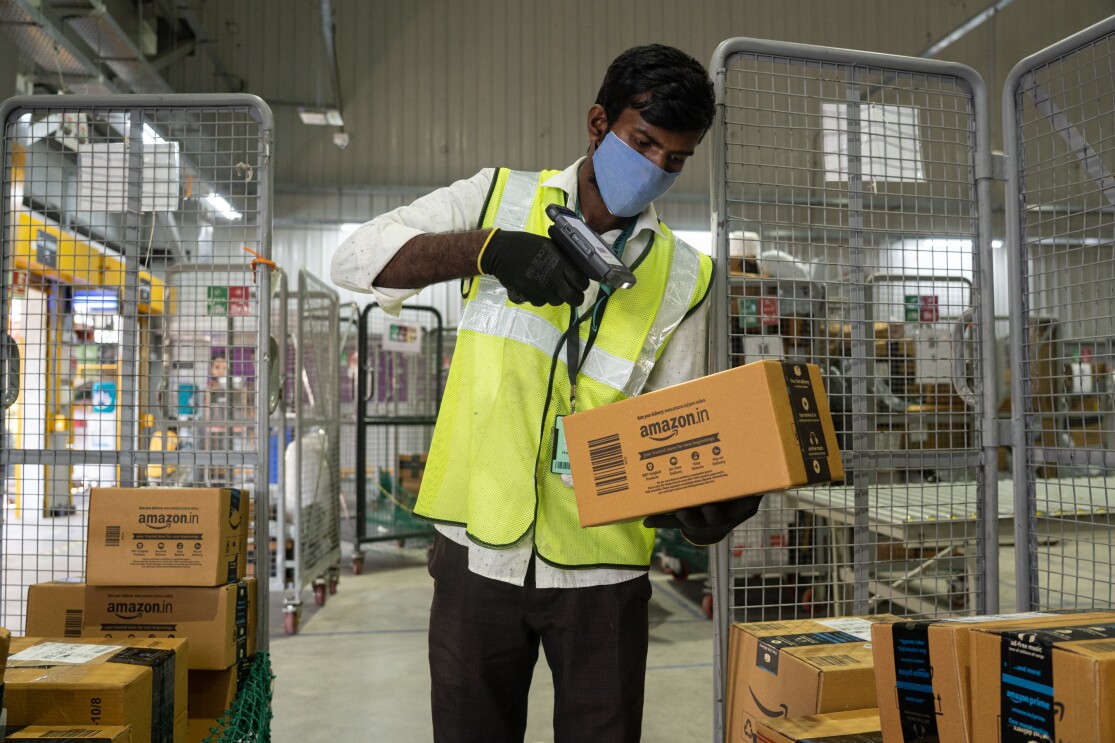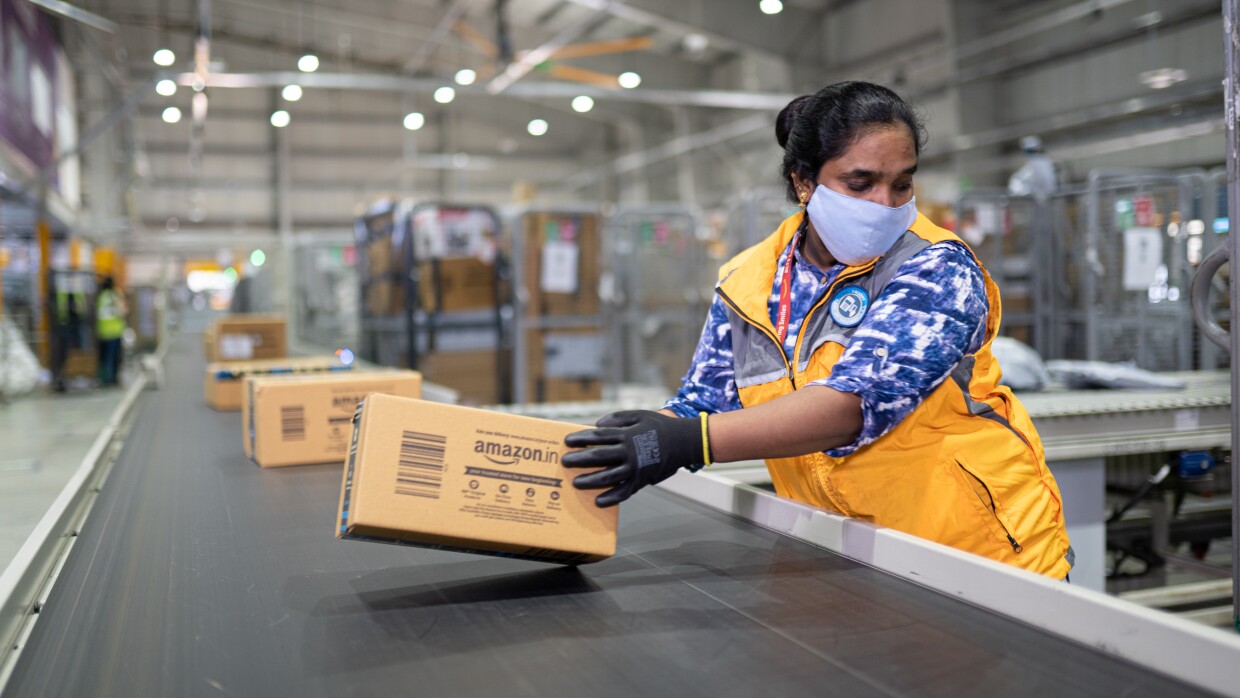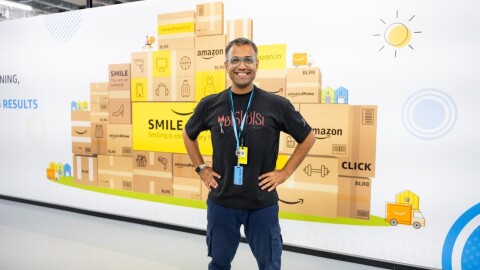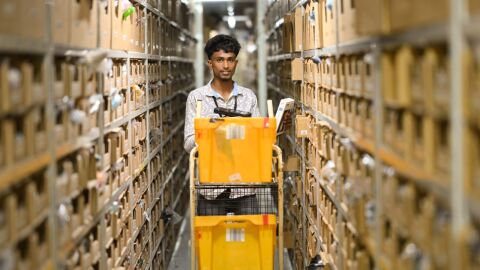In over 8 years, Amazon’s last-mile operations, have efficiently and cost-effectively reached consumers throughout India. Dr Karuna Shankar Pande, Director – Last Mile Operations, Amazon India, talks about how Amazon maintains higher levels of efficiency in last mile operations, keeps up with the consumer’s demand, discussing the progress of electrification of its lastmile fleet, and much more.

The heterogeneity of locations and infrastructure issues often lead to inefficient delivery schedules. However, Amazon has always delivered last mile efficiency and greater customer experience, unlike its counterparts. How do you at Amazon maintain higher levels of efficiency in last mile operations?
Today, Amazon has more than 60 fulfilment centres in 15 states offering 43 million cubic feet of storage space to its sellers, along with sortation centres in 19 states, with a processing area of close to 2.3 million square feet. We have built a robust last mile delivery network with more than 1850 Amazon owned and partner delivery stations with direct reach in many remote locations such as northeastern towns of Morigaon, Diphu, Bihpuria and Karimganj.

We have continued to invest in our flagship ‘I Have Space’ program, which has now more than 28,000 neighbourhood and Kirana partners in close to 420 cities. Under this program, Amazon India partners with local store owners to deliver products to customers within a 2-4 km radius of their store during their free time. Additionally, Amazon works with thousands of delivery partners in 65 cities, as part of the Amazon Flex program providing flexible work opportunities to interested individuals. This is in addition to our existing partnership with third party delivery providers such as Indian Postal Services.
The continued expansion of our last mile delivery network has enabled Amazon to service customers and cover 100% pin codes in India. Amazon has continued to invest in speed with expansion of its next day, same day and sub-same day network. Amazon has further strengthened its ability to deliver with speed, for its unique Sub-Same day delivery offering for all customers.

To ensure reliable and timely deliveries, Amazon has continued to invest in technology, logistics, infrastructure and most importantly people. Over the years we have built a strong network of partners and associates and invested in their training and upskilling. We have focused on building interface tools and technology that enhance driver and customer experience. We leverage our technology and resources to optimize the processes and functions across the last mile network.
The modern-day consumer wants every little detail about their order. They like complete visibility of the product in transit. How does Amazon keep up with the demand for last-mile courier tracking?
Amazon has a robust tracking system implemented across all the three miles. From the time a package is ordered, picked and packed at a fulfillment center, transported to the delivery station and further to the customer, we are able to track the movement of all packages with seamless technology integration across miles.
Amazon customers too can also track their packages from the time their order is placed to the time of delivery from ‘Your Orders’ section on Amazon.in.
Amazon India, last year in April, reaffirmed its commitment to the electrification of its last-mile delivery fleet and achieving its goal of 10,000 EVs by 2025. Share with us the company’s progress so far.
In January 2020, Amazon announced its commitment to include 10,000 Electric Vehicles (EVs) in its delivery fleet by 2025. This commitment came after successful pilots across different cities in 2019; learnings from which have helped Amazon create scalable and long-term EV variants to build this large fleet. These EVs are in addition to the global commitment of having 100,000 electric vehicles in the delivery fleet by 2030.
The fleet of 10,000 EVs includes 3-wheeler and 4-wheeler vehicles which have been designed and manufactured in India. Amazon continues to work with OEMs including Hero Electric, Mahindra Electric, and EVage to build a fleet of ‘Made in India’ electric vehicles that ensure sustainable and safe deliveries of customer orders.
Please share with us the importance of a skilled workforce in the last-mile operations. Also, how do you ensure the safety of your delivery partners ?
Across its operations network, Amazon India has created millions of work opportunities through partnerships with staffing agencies, delivery service partners and innovative last mile programs including Delivery Service Partner (DSP) program, ‘I Have Space’ (IHS) program and Amazon Flex program. With the Delivery Service Partner (DSP) program, Amazon India partners with Small and Mid-sized Businesses (SMBs) to deliver packages to Amazon customers. With the ‘I Have Space’ (IHS) program, Amazon India partners with local stores and business owners to deliver products to customers within a 2 to 4 kilometers radius of their store, allowing them to supplement their regular income. Whereas, Amazon Flex is an innovative opportunity for individuals to create their own schedule and earn an income by delivering packages to customers during their spare time. These programs together enable the company to fulfill its delivery promises.

At Amazon, safety of our associates and delivery partners is of utmost priority. We regularly check on our associates and delivery partners to ensure they are following our safety requirements, we require safety checks every day before a delivery vehicle departs for a route, and we use technology that accounts for factors like package volume and appropriate time for breaks when planning delivery routes. With the onset of COVID-19, we continued to ensure the safety of our last-mile network and provided them with access to several support mechanisms.
(This is an abridged version of the original interview that was published in the May edition of the Logistics Insider magazine. To read the complete article, click here.)











